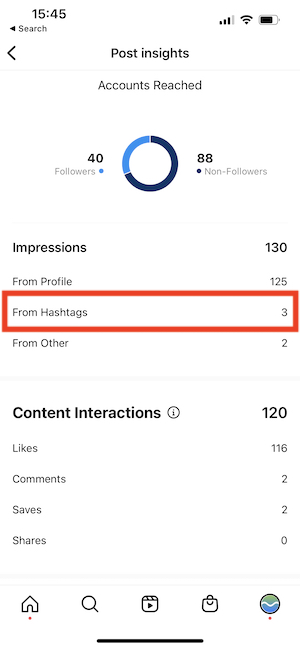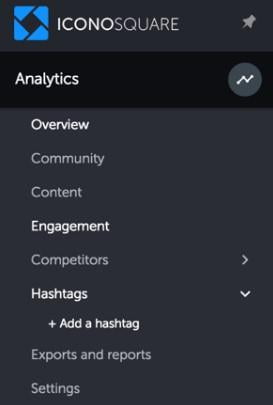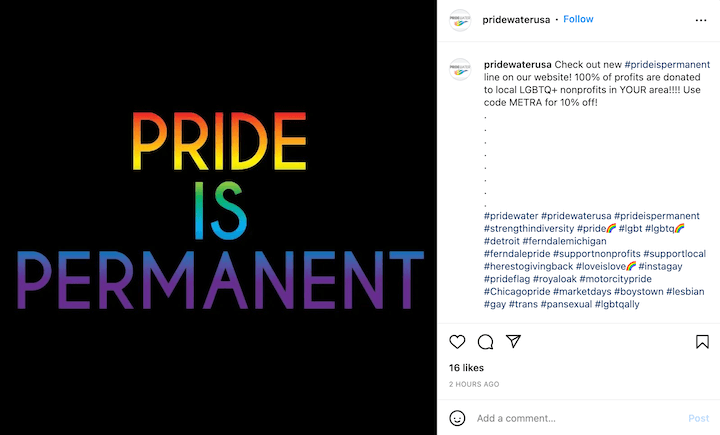PPC
The Complete 2022 Guide (+120 Ideas)

Way back in August of 2007, while you were singing along to Umbrella (ella…ella) on the radio, a product designer named Chris Messina proposed to Twitter the idea of “using #(pound) for groups.”
Twitter’s response? It was too nerdy and would never catch on.
Welp, 15 years later and hashtags are staples in social media platforms, especially on Twitter, TikTok, and what we’ll be talking about today: Instagram.
Read on to learn how to harness the power of Instagram hashtags to grow your following, engage your audience, and build your brand.
Table of contents
Instagram hashtags 101
How to…
What is a hashtag?
A hashtag is a word, phrase, or acronym with the pound symbol (#) in front of it. On social media platforms, if you tap or click on a hashtag, you’ll be shown all of the posts on that platform containing that hashtag. This makes it easy for users to categorize their content and to find specific content in the vast sea of social posts. Hashtags can be found on the most popular social media platforms, including:
- TikTok
Why use Instagram hashtags?
While other social media platforms support hashtags, Twitter and Instagram are really the ones where hashtagging is the most important. Here are some of the many benefits of using Instagram hashtags.
- Expand your reach. Hashtags make your Instagram posts, Reels, and Stories discoverable by users in their regular Instagram meanderings, giving you multiple avenues for exposure to a larger audience.
- Increase engagement. Instagram posts that use hashtags gain a 12.6% increase in engagement compared to those without. Another source says 29%.
- Build your following. Because hashtags help you to get discovered by niche audiences, they help you to get more Instagram followers—quality followers that have the potential to become customers.
- Strengthen your brand: Between branded hashtags that encourage user-generated content and just flat-out funny hashtags that serve only aesthetic purposes, hashtags play a role in expressing your brand voice and even building trust.
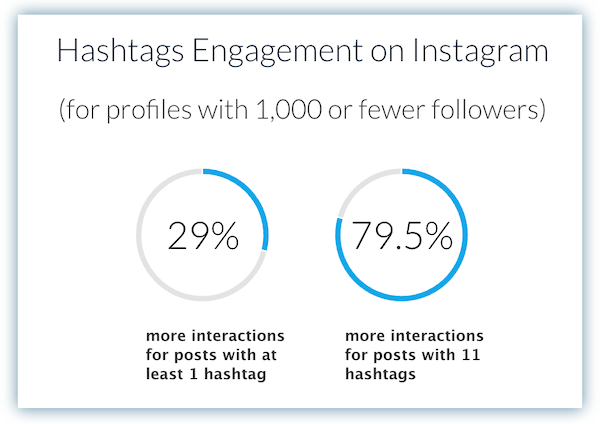
How to add hashtags on Instagram
Adding a hashtag on Instagram is literally as easy as putting the pound symbol in front of a word or phrase! This is also how you add hashtags to YouTube videos. Here are a few side notes:
- No punctuation. Do not include punctuation or spaces in your hashtag. For example, #don’t-hate or #do-not-hate will not work. #donthate will.
- Make it clear. It can help to capitalize the first letter of each word in hashtagged phrases for easier comprehension (for example, #findyourpassion vs #FindYourPassion. Note that capitalization does not change where the hashtag links to.
- Double-check it. Always search the hashtag first to make sure it’s not associated with something inappropriate. Sometimes, combining words without spaces makes new words you didn’t intend.
- Don’t repeat hashtags. Using the same hashtag twice in a post doesn’t increase your chances of getting discovered or showing up higher in searches.
Types of Instagram hashtags
There are all kinds of hashtags to use on Instagram:
- Location hashtags: These are essential for local social media marketing and can help you attract nearby customers. Note that adding a location hashtag is not the same as adding a location on Instagram!
- #detroitrealestate
- #landscaperboston
- Popular hashtags: These are often super-broad, so they aren’t likely to bring in the most relevant engagement but they can help you get exposure nonetheless.
- #waybackwednesday
- #dogsofinstagram
- Trending hashtags: These hashtags emerge from current events of varying tones.
- #marchmadness2022
- #quarantineworkout
- Branded hashtags: Businesses often create hashtags unique to their name or a specific campaign to encourage engagement and user-generated content.
- #goldiesquad (@goldieblox)
- #myDSW (@dsw)
How many hashtags on Instagram?
Instagram allows you to use up to 30 hashtags, and while historically we’ve been advised to use around 10, new data from Later shows that 20-30 hashtags is actually the way to go (for Feed posts). Here’s what they recommend:
- Use 20 hashtags for optimal reach rate.
- Use 30 hashtags for optimal engagement rate.
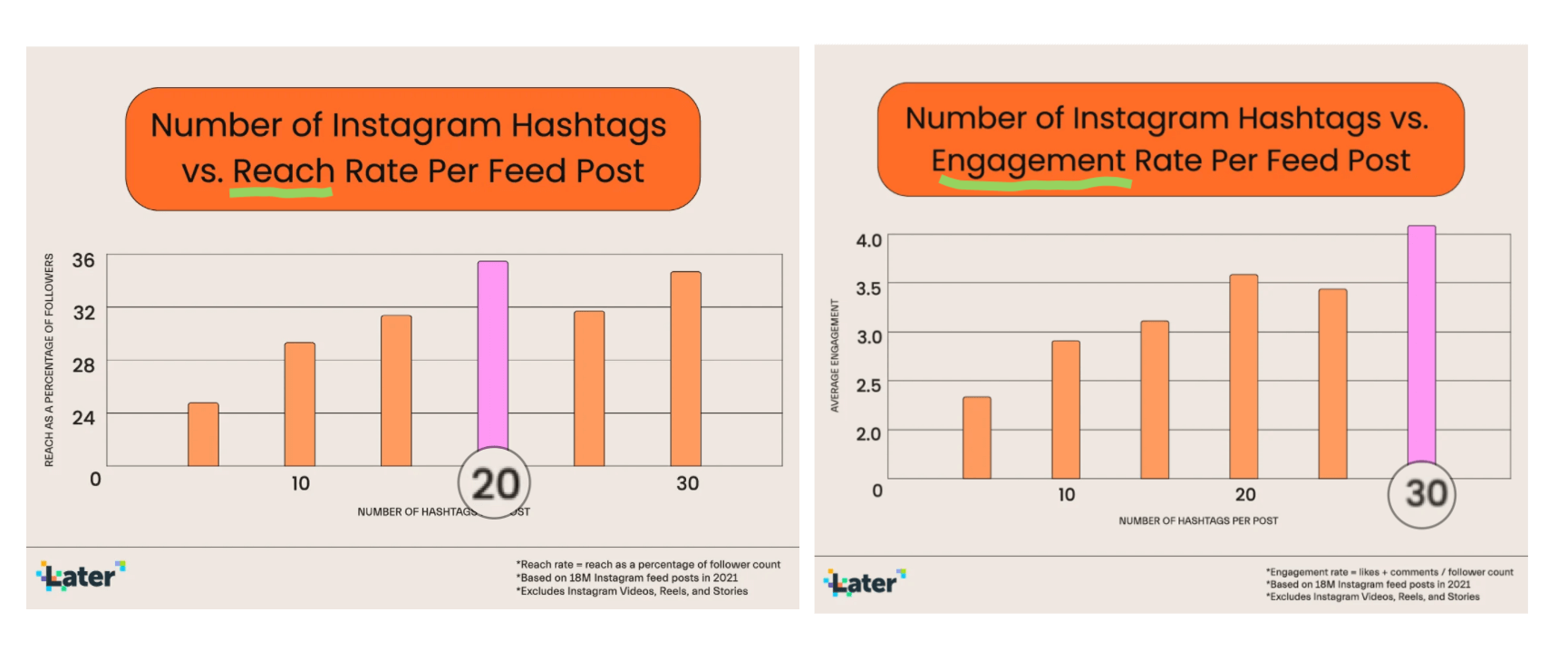
But don’t force it. If your post doesn’t need 30 hashtags, don’t go searching for them. Remember, your goal is not to show up in every search, it’s to show up in the right searches.
How to hide Instagram hashtags
If your post is, indeed, worthy of 20-30 hashtags, there are a few ways to hide them so they don’t clutter up your post.
- Put them in a comment. Include just a few in your Instagram caption and then put the rest in a comment on your post.
- Push them down. Write your caption, then create new lines with just a period on each line. Once there’s enough white space after your caption, paste in your hashtags.
- Cover them. In Instagram Stories, you can make your hashtag text color the same as your background, or cover it with a sticker.
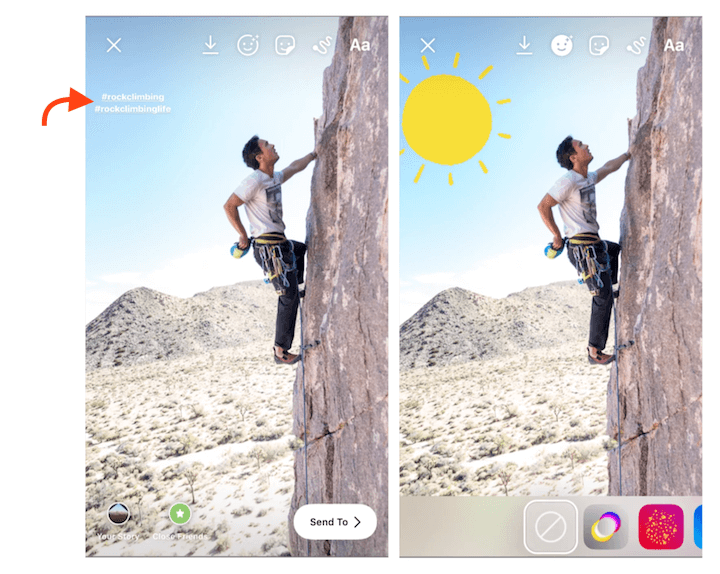
How to use hashtags on Instagram
Hashtags are a powerful tool to promote your Instagram account for free. Here are some ways to use hashtags on Instagram.
1. Treat them like keywords
Hashtags are the keywords of Instagram SEO. You’ll want to use a mix of high-volume hashtags to help you gain broad exposure, as well as lower-volume but higher-intent hashtags to attract potential followers and customers. Hashtag research tools (which we’ll cover below) can help with this, but it’s also intuitive. For example:
- Broad, low intent: #landscaping, #backyard
- Less broad, medium intent: #landscapinghouston, #residentiallandscape
- Specific, high intent: #landscapingserviceshouston

2. Save a default list
While you shouldn’t repeat hashtags in the same post, you can (and should) repeat hashtags that work in different posts. Keep a note handy so you can easily copy and paste them into your posts.
But remember. Relevancy is critical. Remove hashtags from your list where it doesn’t apply. If someone is exploring a hashtag and your super irrelevant post pops up, it’ll make your brand look unreputable, untrustworthy, and/or desperate.
3. Create your own hashtag campaigns
Some of the best Instagram marketing campaigns are hashtag-based. Take the unforgettable #IceBucketChallenge. The marketing team for the ALS Association was able to raise awareness with this hashtag campaign, but they also raised a substantial amount of money ($115 million to be exact!). Think about how you can do something similar by getting your followers to WANT to use your hashtag, which will help spread brand awareness about your business to other Instagrammers.
Hashtags campaigns don’t always have to be short-lived contests or trends. In fact, some of the most successful branded hashtags are the timeless ones, like Chewy’s #petsbringustogether.
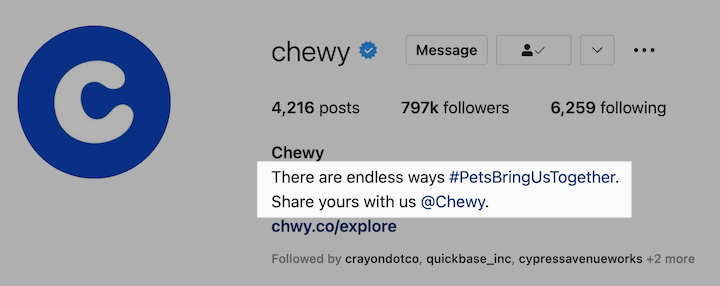
4. Create an evergreen branded hashtag for UGC
Take the hashtag created by the sneaker company, Allbirds. Rather than using generic hashtags on every post, they use #weareallbirds, and happy customers use it as well to share their new kicks!
Tips for creating a branded hashtag on Instagram:
- Make it unique. Be specific and include your brand name
- Make it easy to remember. If a hashtag is too long and complicated like #wordstreammakesadvertisingeasy, your followers won’t remember or use it.
- Check it. Always search the hashtag to make sure it’s not already being used, or worse, used for something inappropriate or insensitive.
5. Use hashtags for giveaways
Run an Instagram giveaway asking entrants to take a picture, tag your business, and use a specific hashtag. Not only does it make it easier for you to track entries, but it can help you populate your branded hashtag with awesome content.
6. Create a hashtag challenge
Hashtag challenges connect your followers and build a community around your brand. Here is a great example from Lululemon UK and Stava, which partnered to run a fun challenge encouraging followers to complete a 40-80K run and tag their Instagram posts #4080challenge.
But as I’ve said before, always check the hashtag. If you search #4080challenge on Instagram, you get more car results than runners.
#4080challenge…a Lululemon campaign and a car
7. Tag other brands
In addition to tagging other brands in your Instagram posts, use their branded hashtags too. It’s a good way to support other businesses in their Instagram marketing strategies, and you never know—they just might feature you or use your hashtag to return the favor.
Want more inspiration? Check out these 157 Authentic Fall Hashtags to Harvest More Customers.
8. Follow hashtags
There are a few hashtags you should follow on Instagram.
- Your own branded hashtags: To stay on top of engagement and monitor your reputation. Users may not always tag your business in the same post where they use your hashtag.
- Your competitors’ hashtags: To keep tabs on them.
- Industry hashtags: To stay on top of news and trends in your niche.
To follow a hashtag, simply search that hashtag and select the “follow” button in search results.
How to find hashtags on Instagram
To use hashtags in your Instagram content in a meaningful and effective way, you need to do your research. So where to start? Here are a few ideas…
Hashtag research tools
There are tons of Instagram hashtag generators out there—like All Hashtag and Sistrix—that will generate relevant hashtags and give you some data on what hashtags are popular.
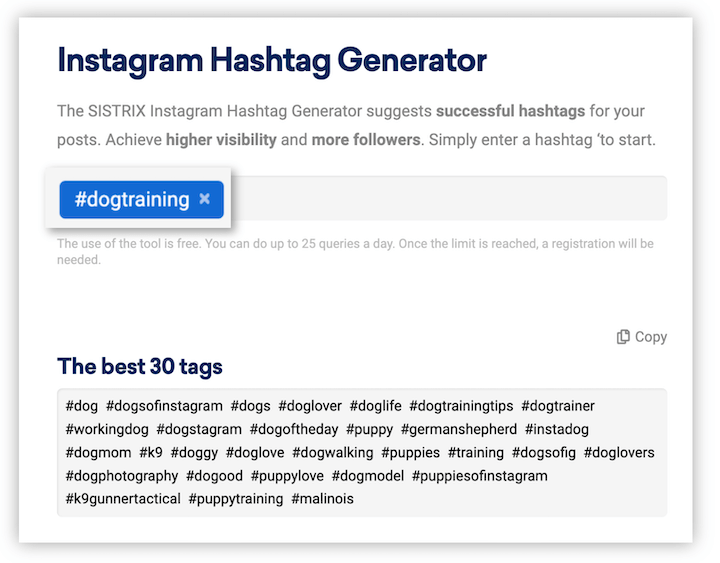
Instagram search
Type hashtag ideas into the Instagram search bar and see what auto-fills. Easy peasy.
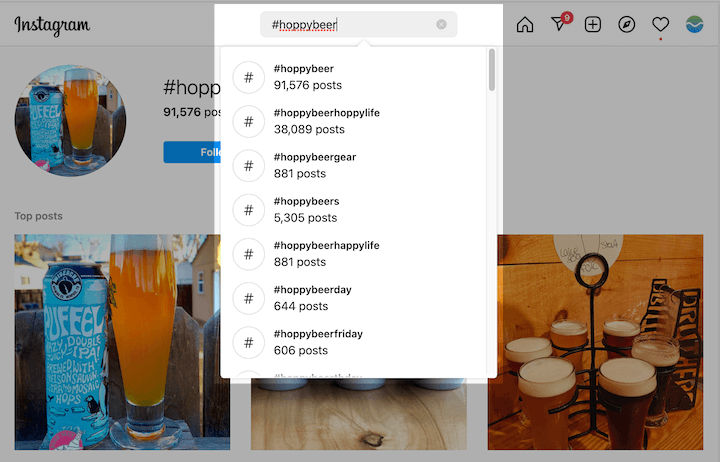
Check your competitors
Keep an eye on your competitors and industry influencers. If you’re not sure what tags would be worth using, just take a look at what others are using successfully in your industry, That will give you a good starting point from which to mold your own strategy.
Instagram hashtag analytics
It’s time to talk reporting. You can’t know if your hashtags are improving your social media marketing without the numbers. Luckily, you have lots of tools at your disposal. Here are exactly three.
1. Instagram Insights
First up is Instagram’s analytics. You can access this on mobile if you have an Instagram business account. You can also view an individual post’s hashtag performance by tapping “View insights” under that post.
2. Sprout Social
If you are looking to get a bit more detail on individual hashtag performance, it might be worth investing in another reporting tool that digs into the details, like Sprout Social. This robust social reporting tool will allow you to generate Instagram hashtag performance reports to do a variety of things, including:
- Compare your most used Instagram hashtags to the ones that get the most engagement.
- See how branded hashtags perform relative to broader hashtags.
- Use their tagging feature to build campaign-specific hashtag reports.
3. Iconosquare
While the pricing is a bit higher for Iconosquare, there is a ton you can do, from scheduling social posts, tracking and responding to comments, and accessing detailed analytics all from one place.
When it comes to hashtag tracking, this tool provides quite sophisticated analytical data in regards to hashtag engagement and whether or not certain hashtags are contributing to brand and/or campaign growth.
For more, see Brand24’s list of hashtag trackers.
The most popular Instagram hashtags of all time
Popular hashtags aren’t going to help you to stand out, but they can’t hurt in giving you some exposure. Plus, they’re a good “seed” hashtag that you can modify for relevancy.
- #love (1.835B)
- #instagood (1.150B)
- #fashion (812.7M)
- #photooftheday (797.3M)
- #beautiful (661.0M)
- #art (649.9M)
- #photography (583.1M)
- #happy (578.8M)
- #picoftheday (570.8M)
- #cute (569.1M)
- #follow (560.9M)
- #tbt (536.4M)
- #followme (528.5M)
- #nature525.7M
- #like4like (515.6M)
- #travel (497.3M)
- #instagram (482.6M)
- #style (472.3M)
- #repost (471.4M) (How to repost on Instagram here!)
- #summer (454.2M)
Remember, the best way to use these hashtags is for inspiration—not for hashtag stuffing.
Daily Instagram hashtags
We actually have an entire post on hashtags for every day of the week, but here’s a super-distilled version:
- Monday: #mindfulmonday, #mondaymood, #mondayquotes
- Tuesday: #tooltiptuesday, #traveltuesday, #tuesdaytrivia
- Wednesday: #waybackwednesday, #wellnesswednesday, #woodworkingwednesday
- Thursday: #throwbackthursday, #thankfulthursday, #thursdaythought
- Friday: #fearlessfriday, #flashbackfriday, #featurefriday
- Saturday: #saturdaysweat, #saturdayselfie, #saturdaysale
- Sunday: #sundayfunday, #spotlightsunday, #sundaysweets

#thursdaythoughts
Instagram hashtags for growth
The best Instagram hashtags to use for growth are those that are specific to your niche. You can then modify them to include your location or even business name. Steph has you covered with over 300 more industry-specific hashtags to use in your posts, but here’s a taste:
- Real estate: #newlisting, #openhouse, #mortgagetips, #townhouse
- Education: #highered, #virtuallearning, #alumni, #go[schoolname]
- Automotive: #carsforsale, #cardealership, #collisionrepair, #tirerotation
- Healthcare: #getyourcheckup, #telehealth, #cancerawareness, #hearthealth

#carmechaniclife…not shown in the image due to the hiding trick mentioned above
Mental health hashtags
#stigmafree, #mentalhealthadvocate, #mentalhealthawareness, #anxietyisreal, #endthestigma, #selfcare, #acceptyourself, #gowithin, #mindsetshift, #selfacceptance, #youareworthy, #healthyboundaries, #itsokaytonotbeokay

#itsokaytonotbeokay
Diversity & inclusion hashtags
#empowerment, #inclusion, #socialimpact, #community, #loveislove, #accessible, #disabilityawareness, #diversityequityinclusion, #pride, #blacklivesmatter, #allmeansall, #bettertogether, #unityindiversity, #loveforall, #minorityowned, #veteranowned, #womanowned, #blackowned
Small business Instagram hashtags
#shoplocal, #buylocal, #supportsmallbiz, #familyowned, #smallbusinesssaturday, #smallbusinessweek, #smallbusinesslove, #smallbusinesstips, #smallbusinessowner, #handmade, #handcrafted, #etsyshop
Motivating hashtags
#hustle, #motivationonoftheday, #ifnotyouwho, #justdoit, #alwaysbekind, #workhard, #bebolder, #nevergiveup, #walkyourtruepath, #starttoday, #carpediem, #ifnotnowwhen, #accountability, #bethechange
 #bethechangeyouwanttosee
#bethechangeyouwanttosee
Start using hashtags on Instagram
Who knew that one symbol could hold the power to expand your reach, attract more followers, and grow your business? Oh and I almost forgot—keep these in your back pocket for when the timing is right:






